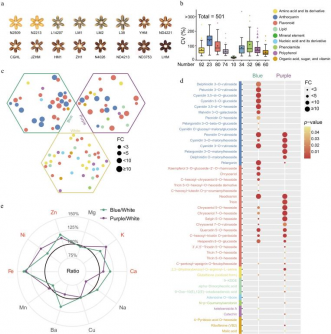UPDATE: Groundbreaking research just released on March 7, 2025, reveals that colored wheat varieties are packed with as many as 501 essential nutrients, far exceeding traditional white wheat. This study, led by Wei Chen at Huazhong Agricultural University, highlights the urgent need for enhanced nutritional content in staple crops as global dietary trends shift toward healthier eating.
The study shows that colored wheat, particularly those with blue, purple, and black grains, boasts significantly higher levels of health-promoting compounds including anthocyanins, flavonoids, vitamins, and essential minerals like iron and zinc. The findings are crucial, especially given the persistent issue of “hidden hunger” affecting many regions worldwide.
According to the research, “green wheat kernels,” harvested at the mid-filling phase, are found to be exceptionally nutrient-rich, containing over 200 nutrients compared to their mature counterparts. This discovery could revolutionize how we approach crop breeding and nutritional enhancement, making colored wheat a promising candidate for biofortification efforts.
The researchers utilized advanced transcriptomic analysis to pinpoint key genes responsible for anthocyanin biosynthesis, identifying 21 candidate genes linked to pigment accumulation. This insight provides a pathway for developing wheat varieties with improved nutritional profiles. As the global health landscape continues to evolve, the implications of these findings extend to functional food development and agricultural practices.
The implications for consumers are profound. With growing awareness of nutrition’s role in combating lifestyle-related diseases such as diabetes and cardiovascular issues, colored wheat’s antioxidant-rich profile can serve as a vital ingredient in health-focused products.
The full study published in the journal Seed Biology emphasizes the importance of understanding nutrient dynamics in wheat grains, urging for further detailed studies to enhance the nutritional quality of our food supplies.
Stay tuned for more updates as researchers continue to explore the potential of colored wheat in improving global health outcomes. The future of wheat and nutrition is looking brighter than ever, with immediate applications in both agriculture and functional foods on the horizon.
For further details, the complete study can be accessed [here](https://doi.org/10.48130/seedbio-0025-0003).






































































